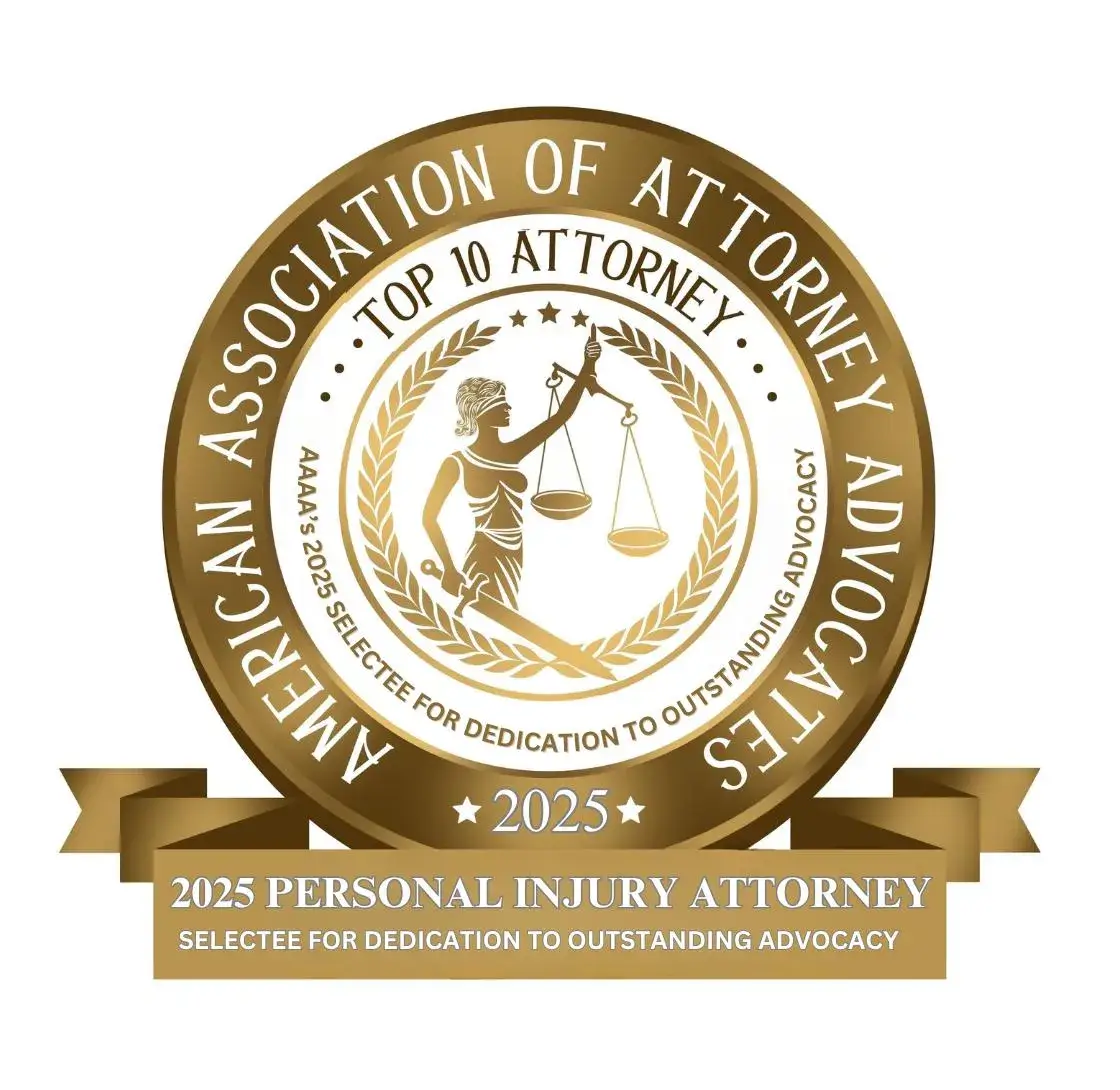What is the Average Settlement for a Car Accident Neck and Back Injury?
If you’ve been in a car accident and are now dealing with neck or back injuries, you know how challenging it can be. The pain might make it har1d to work, care for your family, or even go about your daily routine. You’re likely facing medical bills, missed paychecks, and the stress of trying to make sense of what happens next. On top of that, you’re probably wondering, “What is a fair settlement for my injuries?”
The truth is, no two cases are exactly the same. But understanding how settlements are determined can give you clarity and peace of mind as you move forward in your recovery journey.
What is the average settlement for a car accident neck and back injury?
Car accident neck and back injury settlements vary based on how the crash affects your body, job, and quality of life. Here’s what typically influences the amount:
- Injury severity: Mild whiplash may settle for $10,000–$25,000, while spinal damage or nerve injury can reach six figures or more.
- Medical expenses: ER visits, therapy, surgery, and future care are factored into the total.
- Lost income: If you miss work or can’t return to your previous job, that loss is compensated.
- Pain and suffering: Physical pain, mental stress, and lifestyle changes are valued using a multiplier method.
- Fault and evidence: Clear proof of the other driver’s liability boosts your claim’s strength.
- Insurance limits: Your settlement may be capped by the at-fault party’s policy, unless underinsured coverage applies.
Factors That Influence Settlement Amounts
The value of your settlement is determined not just by the accident itself, but by how deeply it has disrupted your life. Here are some of the factors that play the biggest roles in calculating a settlement for neck and back injuries:
Severity of Your Injuries
Your injuries are at the heart of your case. A minor whiplash might heal in weeks with physical therapy, while a herniated disc or spinal fracture could require months of treatment, surgery, or even a lifetime of care. Severe injuries often result in higher settlements because they cause greater physical, emotional, and financial hardship.
For neck and back injuries, the spectrum can range from muscle strains to permanent spinal damage. For instance:
- Soft Tissue Injuries (like whiplash): These might involve rest, pain management, and physical therapy, but they generally have faster recovery times. Settlements for these injuries are often on the lower end.
- Herniated Discs or Nerve Damage: These are more complex injuries, sometimes requiring surgery or long-term treatment. Settlements for these can be considerably higher.
- Spinal Fractures or Paralysis: These are life-altering injuries that require extensive compensation for long-term care, lost income, and diminished quality of life.
Your doctor’s diagnosis, imaging tests like MRIs, and records of treatment all play a vital role in proving the severity of your injuries.
Medical Expenses
The cost of medical care after a car accident adds up quickly. Settlement amounts usually aim to cover both current and future medical expenses related to your injury. These costs might include:
- Emergency room visits
- Hospital stays
- Chiropractic care
- Physical therapy
- Prescription medication
- Surgery or injections
- Follow-up appointments and diagnostic tests
For example, someone with a severe spinal injury might need surgery, months of rehabilitation, and ongoing appointments with specialists. Those future costs are taken into account when calculating settlements. Be sure to keep detailed records of every medical expense, no matter how small. These will be critical in ensuring you get the compensation you deserve.
Lost Wages or Income
If your injuries have kept you from work, you can claim compensation for lost wages. This includes the income you’ve already lost and any future inability to work caused by your injury.
For example, if your job involves physical labor and you’re recovering from a back surgery, you may not return to work for months or even years. Beyond that, if your injuries are permanent or limit your earning capacity, your settlement can reflect that as well. This might involve calculating how much income you would have earned over your lifetime if not for the accident.
Pain and Suffering
Pain is invisible, but anyone who’s dealt with neck and back injuries knows how much it impacts your daily life. Every accident victim’s pain is different. For some, it’s a persistent dull ache that never goes away. For others, it’s debilitating pain that affects mobility and mental health. Either way, pain and suffering are factors in your settlement.
But how does pain translate into dollars? Unlike medical bills or lost wages, pain and suffering don’t have a clear monetary value. Instead, this part of your settlement is evaluated based on:
- Your quality of life after the injury
- Emotional distress caused by chronic pain
- The impact your injuries have had on your relationships or hobbies
Sometimes, attorneys and insurers use a “multiplier method” to determine pain and suffering. This means multiplying your economic damages (like medical expenses) by a number between 1 and 5, depending on the severity of your injuries.
Liability and Fault
Settlement amounts also depend on who is at fault and how much they are responsible for the accident. If the other driver is clearly at fault, such as in rear-end collisions or accidents caused by distracted driving, their insurance company will likely be responsible for paying your settlement.
However, if you share some fault, your settlement could be reduced. For example, if you were speeding at the time of the accident, you might be found partially responsible, which could lower the amount you receive.
Insurance Policy Limits
Sadly, even if your injuries are severe and your expenses are high, your settlement might be limited by the at-fault driver’s insurance policy. Insurance companies won’t pay out more than the maximum coverage amount listed on the policy. For instance, if the other driver has a $50,000 liability limit, that may be the most you can receive from their insurer.
For this reason, it’s also important to review your own insurance coverage. Policies like underinsured motorist coverage might help cover any shortfall.
The Strength of Your Evidence
Documenting your injuries and expenses thoroughly can have a big impact on your settlement. Insurance companies are more likely to agree to higher amounts when you have clear evidence to back up your claims. This includes:
- Medical records and imaging results
- Documentation of lost wages or letters from your employer
- Photos of your injuries
- Notes on how the injury has affected your life
- Eyewitness accounts or police reports from the accident
The better your evidence, the harder it is for the insurance company to dispute your claims.
How Are Settlements Calculated?
Settlements are designed to make you “whole” again. That means they should cover all of your economic damages (like medical bills and lost wages) and provide compensation for your non-economic damages (like pain and suffering).
Calculations often start by adding up your economic damages. Then, depending on the severity of your injury, that total might be multiplied by a factor of 1 to 5 to account for non-economic damages. For example:
- Medical Expenses + Lost Wages = $30,000
- Pain and Suffering Multiplier = 3
- Total Settlement = $30,000 x 3 = $90,000
However, every case is different, and settlements might not follow a strict formula. A skilled injury attorney can help argue for the highest possible compensation by emphasizing the ways your injury has affected your life.
Hypothetical Settlement Examples for Neck and Back Injuries
While it’s tempting to look for a number, averages can be misleading. Settlements for neck and back injuries can range anywhere from $10,000 to over $1 million, depending on the severity of the injury and other key factors.
That said, here are some general examples:
- Minor soft tissue injuries (like mild whiplash): $10,000 – $25,000
- Moderate injuries (herniated discs, physical therapy needed): $25,000 – $100,000
- Severe injuries (requiring surgery or leading to permanent disability): $100,000 – $500,000+
- Catastrophic spinal cord injuries: $500,000 to over $1 million
Remember, these are ballpark figures. The actual value of your claim depends on the specific details of your accident, your medical condition, and your personal losses.
How to Handle Insurance Companies
Dealing with insurance companies can be frustrating, especially when you’re already grappling with physical pain and emotional stress. Here are some key tips to keep in mind:
- Be Cautious with Early Offers
Insurance companies often make lowball offers early in the process, hoping to settle quickly before all damages are evident. While it might be tempting to accept such an offer to move on, it’s crucial to wait until you know the full extent of your injuries and their impact on your life. - Document Everything
Strong documentation is your best weapon. Keep records of all medical bills, treatment plans, missed work hours, and communication with insurance adjusters. Photos of the accident scene and your injuries can also support your case. - Don’t Give Recorded Statements Without Guidance
Insurance companies may ask you for a recorded statement, but it’s important to consult with a professional before agreeing. Misstatements or uncertain answers could harm your claim later. - Stay Off Social Media
Anything you post about your accident or life afterward could be used against you. For example, if you claim you’re unable to participate in normal activities but someone sees you smiling in a photo at a family barbecue, it might cast doubt on the severity of your injuries. - Consider Legal Representation
Having an experienced attorney on your side can significantly level the playing field. Insurance companies often have teams of professionals working to minimize payouts. Legal guidance ensures you aren’t navigating this complex process alone.
Steps to Take After a Neck and Back Injury
The steps you take immediately after an accident can play a big role in both your recovery and your ability to secure fair compensation. Here is a straightforward guide to help you through this process:
- Seek Medical Attention Immediately
Even if you feel “okay” right after the accident, it’s essential to get checked out by a medical professional. Neck and back injuries can sometimes take days or even weeks to fully manifest. Early diagnosis not only protects your health but also documents the injury as related to the accident. - Follow Your Doctor’s Recommendations
Adhering to your medical treatment plan demonstrates your commitment to recovery and helps build a strong case. Skipping appointments or neglecting prescribed care can give the insurance company room to argue that your injuries aren’t severe. - Notify the Insurance Company (But Be Careful)
While you should notify your insurance company about the accident, proceed with caution when discussing details. Stick to the facts and avoid assigning blame or speculating on the extent of your injuries until you have all the medical information. - Keep a Personal Record
Document your experience, including the pain or mobility issues you face daily. A journal or diary can serve as valuable evidence for demonstrating non-economic damages like pain and suffering. - Focus on Rest and Recovery
This might sound obvious, but it’s essential not to rush back to work or normal activities before you’re ready. Pushing yourself too hard can worsen injuries or delay the healing process, which could also weaken your claim. - Consult an Experienced Attorney
Navigating a claim while focusing on your physical and emotional recovery is no easy task. An attorney can manage the complex legalities while you concentrate on healing.
Introducing Maggiano, DiGirolamo & Lizzi, P.C.
Recovering after a car accident is never easy, especially when neck and back injuries leave you facing physical pain, financial stress, and uncertainty about the future. At Maggiano, DiGirolamo & Lizzi, P.C., we understand how challenging this time can be, and we’re here to provide the strength and support you need.
Whether your injury stems from a rear-end collision in bustling Fort Lee or a multi-car pileup in the Bronx, our team is ready to guide you. From negotiating with insurance adjusters to representing you in court, we’ll be with you throughout the process. And since we work on a contingency fee basis, you don’t pay us a dime in attorney’s fees unless we win your case.
If you’ve been injured in a car accident and are unsure where to turn, we invite you to reach out to us at (201) 585-9111 or through our online form for a free consultation. We can discuss your case, answer your questions, and help you begin your journey toward rebuilding your life. You don’t have to face this challenge alone. We’re in it together.


















